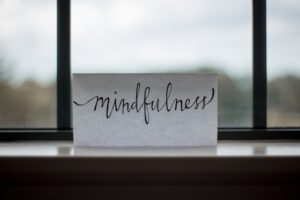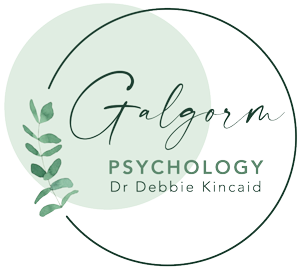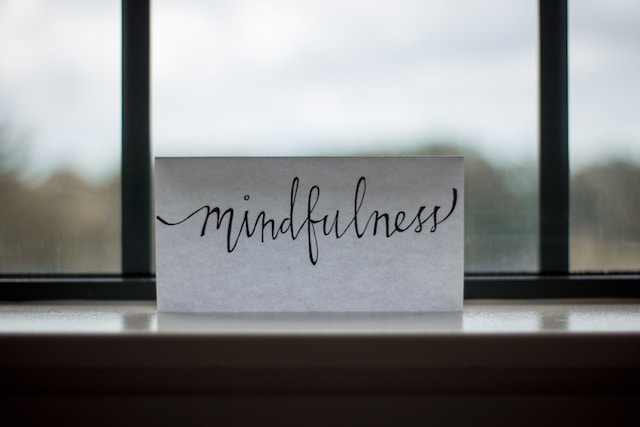Too busy for mindfulness practice? Here are a few ideas to try…
What is mindfulness?
We hear the word “mindfulness” everywhere these days but what does it really mean and what is all the hype about? Mindfulness simply means paying attention to the present moment by being fully engaged with whatever we are doing, in a non-judgemental way. It is not a new concept- mindfulness has been around for a long time. Ever heard the saying “take time to smell the roses?” This is reminder to notice our surroundings and pay attention to the present moment amidst the busyness of life. Taking time to smell the roses is quite literally a mindfulness practice.
Mindfulness is a simple concept: it is about being aware of our thoughts, feelings, sensations, sights, sounds, or any other part of our experience, however this does mean that it is easy. So often our minds are bombarded with information and the endless ‘to do’ lists that it is difficult for us to stay connected to the present. Instead, we are swept up in thoughts about the past or the future. Mindfulness practice is important to help train (or re-train) our minds to pay attention to the ‘little things’.

Why is mindfulness important?
Practising mindfulness is essentially ‘brain training’. We can train our minds to focus and pay greater attention to the present moment. As with most behaviours- the more we practice, the easier and more automatic it becomes for us. We can think of mindfulness practice as a workout for our minds, training our attention and focus just as we would train the muscles within our body.
What are the benefits of being mindful?
Research studies have repeatedly documented the benefits of mindfulness such as reduced stress, anxiety and depression, and enhanced wellbeing and positivity. It appears to increase our capacity for compassion and increase our overall happiness and satisfaction with life.
Developing our skills of mindfulness can allow us the opportunity to make choices about what we focus our attention on, rather than being at the mercy of whatever thoughts happen to enter our mind. We can gain a distance from our thoughts and begin to recognise that our thoughts are just thoughts. Thoughts are simply a mental event and they are not facts. When we can begin to notice our thoughts (rather than being swept along by our thoughts in a “mind-less” way) we can choose to respond by allowing the thought to pass.
But I don’t have time for lengthy mindfulness meditations!
Time can be a barrier for many of us when it comes to practising mindfulness or other self-care exercises but this needn’t be the case; it is possible to weave mindful practices into our everyday routines. Try pairing mindfulness exercises with features of our daily routines to help develop ‘pockets’ of mindfulness throughout the day- these mindful moments all add up.
Mindfulness techniques for busy lives
Enjoy a morning coffee? You can experience your coffee in a mindful way by noticing the coffee aroma and paying attention to the colour of the coffee and any colour changes as the milk swirls into it. Notice the warmth of the coffee cup as you hold it in your hands. Focus on the first flavours you notice as you take the first sip of coffee and pay attention to the sensations such as the warmth of the coffee in your mouth. Notice how your mind knows exactly when to swallow the coffee. Allow your attention to rest on the sensations and all elements of the experience of drinking each sip of coffee. If you drink tea or coffee throughout the day, you could use the time it takes for the kettle to boil as an opportunity for a mindful moment. Remember- all those moments add up across the entire day.
We can pair other daily activities with the opportunity to complete the routine mindfully, for example brushing your teeth. We can mindfully attend to the taste, smell and sensation of the toothpaste as we brush. Notice the movement of the toothbrush and pay attention to the feelings and sensations as the brush moves over our teeth and gums. If you brush your teeth morning and night then that’s two opportunities for mindfulness practice every day.
How about a mindful walk to the bathroom? We all (should) use the bathroom multiple times each day, so why not try and combine this daily activity with a mindful moment. We could pay attention to our environment as we walk to the bathroom, noticing any sights, sounds, smells and sensations which we might be experiencing. And when washing our hands, we can mindfully attend to the scent of the soap and how it lathers on our hands. Notice the bubbles and the temperature of the water as it washes away the soapy lather. Pay attention to the changes in sensation as we dry our hands.
Perhaps the most effective anchor which we have available to us at anytime (and any place) is our breath. We can choose to focus our attention on the breath and practice mindful awareness of our breathing. We can do this by beginning to notice any sensations in the body on the in-breath. Notice where the air enters the nose and any sensations of coolness or warmth as we breathe in. Allow your attention to rest on the movement of the breath down into the lungs, and slowly become more aware of the point at which the in-breath turns to become an out-breath. Continue to extend your attention to follow the path of breath up and out of the body, noticing any sensations as the breath moves out through the mouth. Then noticing the point at which the out-breath begins to turn to an in-breath again as the breathing cycle continues.
Being caught in a traffic jam presents an opportunity for us to notice our thoughts and feelings (and urges). This is a good one to practice the ‘non-judgemental’ element of mindfulness. If you are stuck in traffic, try reframing this situation into an opportunity to be mindful because… let’s face it, there’s not a lot else you can do. Better to arrive late at your destination in a calmer, more focused state than arriving late in a frazzled and stressed state.
A few other ideas for weaving mindfulness into everyday life:
-Applying hand cream/ hand sanitiser
-Eating
-Putting on make-up/ moisturiser
-Showering
-Walking
-Washing dishes
There are plenty of apps which offer guided mindfulness meditations. Guided practice can be a good way to begin to develop mindfulness skills as it can be easier to remind our mind to return to the exercise when we have a voice guiding us with the exercise. Remember, the skill is in noticing when our mind has wandered and gently bringing the focus back to the here and now. The mind will wander (as that is what minds do!) but each time you notice it drifting and are able to refocus it on the present, that is another time you have practiced the skill of mindfulness. Give it a go and see what works for you and your routine.
If you are interested in exploring mindfulness further, have a look at the mindfulness apps listed on the resources page. If you are considering therapy, click here to get in touch and arrange a free consultation.

